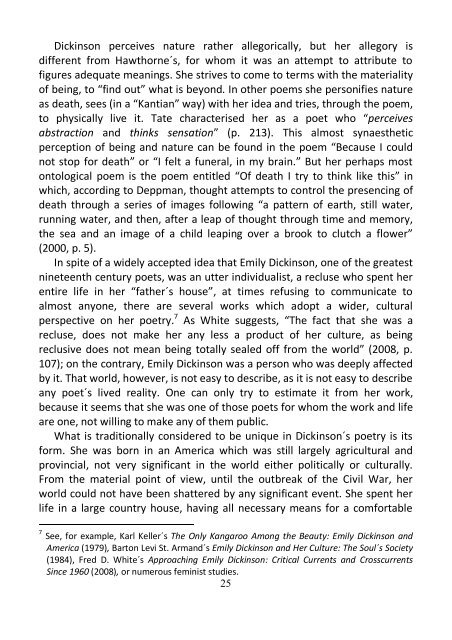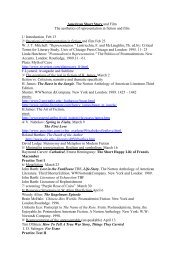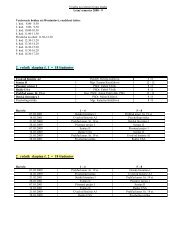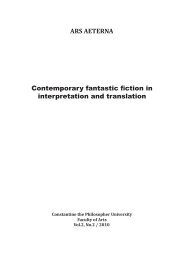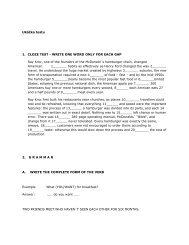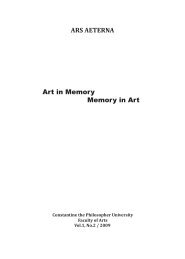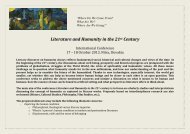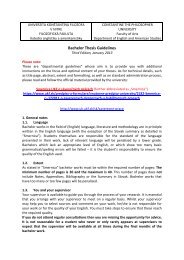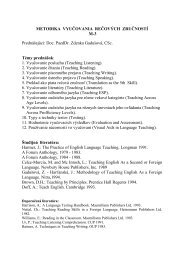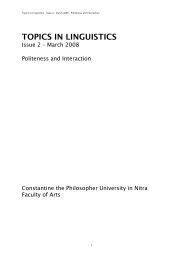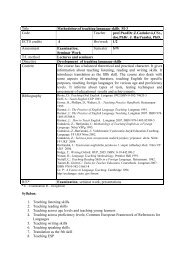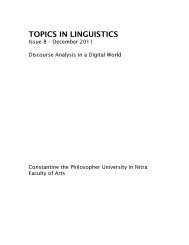Literature and Culture
Literature and Culture
Literature and Culture
You also want an ePaper? Increase the reach of your titles
YUMPU automatically turns print PDFs into web optimized ePapers that Google loves.
Dickinson perceives nature rather allegorically, but her allegory is<br />
different from Hawthorne´s, for whom it was an attempt to attribute to<br />
figures adequate meanings. She strives to come to terms with the materiality<br />
of being, to “find out” what is beyond. In other poems she personifies nature<br />
as death, sees (in a “Kantian” way) with her idea <strong>and</strong> tries, through the poem,<br />
to physically live it. Tate characterised her as a poet who “perceives<br />
abstraction <strong>and</strong> thinks sensation” (p. 213). This almost synaesthetic<br />
perception of being <strong>and</strong> nature can be found in the poem “Because I could<br />
not stop for death” or “I felt a funeral, in my brain.” But her perhaps most<br />
ontological poem is the poem entitled “Of death I try to think like this” in<br />
which, according to Deppman, thought attempts to control the presencing of<br />
death through a series of images following “a pattern of earth, still water,<br />
running water, <strong>and</strong> then, after a leap of thought through time <strong>and</strong> memory,<br />
the sea <strong>and</strong> an image of a child leaping over a brook to clutch a flower”<br />
(2000, p. 5).<br />
In spite of a widely accepted idea that Emily Dickinson, one of the greatest<br />
nineteenth century poets, was an utter individualist, a recluse who spent her<br />
entire life in her “father´s house”, at times refusing to communicate to<br />
almost anyone, there are several works which adopt a wider, cultural<br />
perspective on her poetry. 7 As White suggests, “The fact that she was a<br />
recluse, does not make her any less a product of her culture, as being<br />
reclusive does not mean being totally sealed off from the world” (2008, p.<br />
107); on the contrary, Emily Dickinson was a person who was deeply affected<br />
by it. That world, however, is not easy to describe, as it is not easy to describe<br />
any poet´s lived reality. One can only try to estimate it from her work,<br />
because it seems that she was one of those poets for whom the work <strong>and</strong> life<br />
are one, not willing to make any of them public.<br />
What is traditionally considered to be unique in Dickinson´s poetry is its<br />
form. She was born in an America which was still largely agricultural <strong>and</strong><br />
provincial, not very significant in the world either politically or culturally.<br />
From the material point of view, until the outbreak of the Civil War, her<br />
world could not have been shattered by any significant event. She spent her<br />
life in a large country house, having all necessary means for a comfortable<br />
7 See, for example, Karl Keller´s The Only Kangaroo Among the Beauty: Emily Dickinson <strong>and</strong><br />
America (1979), Barton Levi St. Arm<strong>and</strong>´s Emily Dickinson <strong>and</strong> Her <strong>Culture</strong>: The Soul´s Society<br />
(1984), Fred D. White´s Approaching Emily Dickinson: Critical Currents <strong>and</strong> Crosscurrents<br />
Since 1960 (2008), or numerous feminist studies.<br />
25


